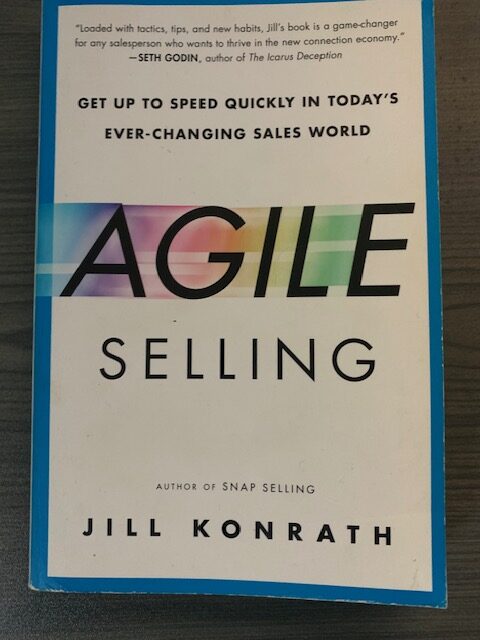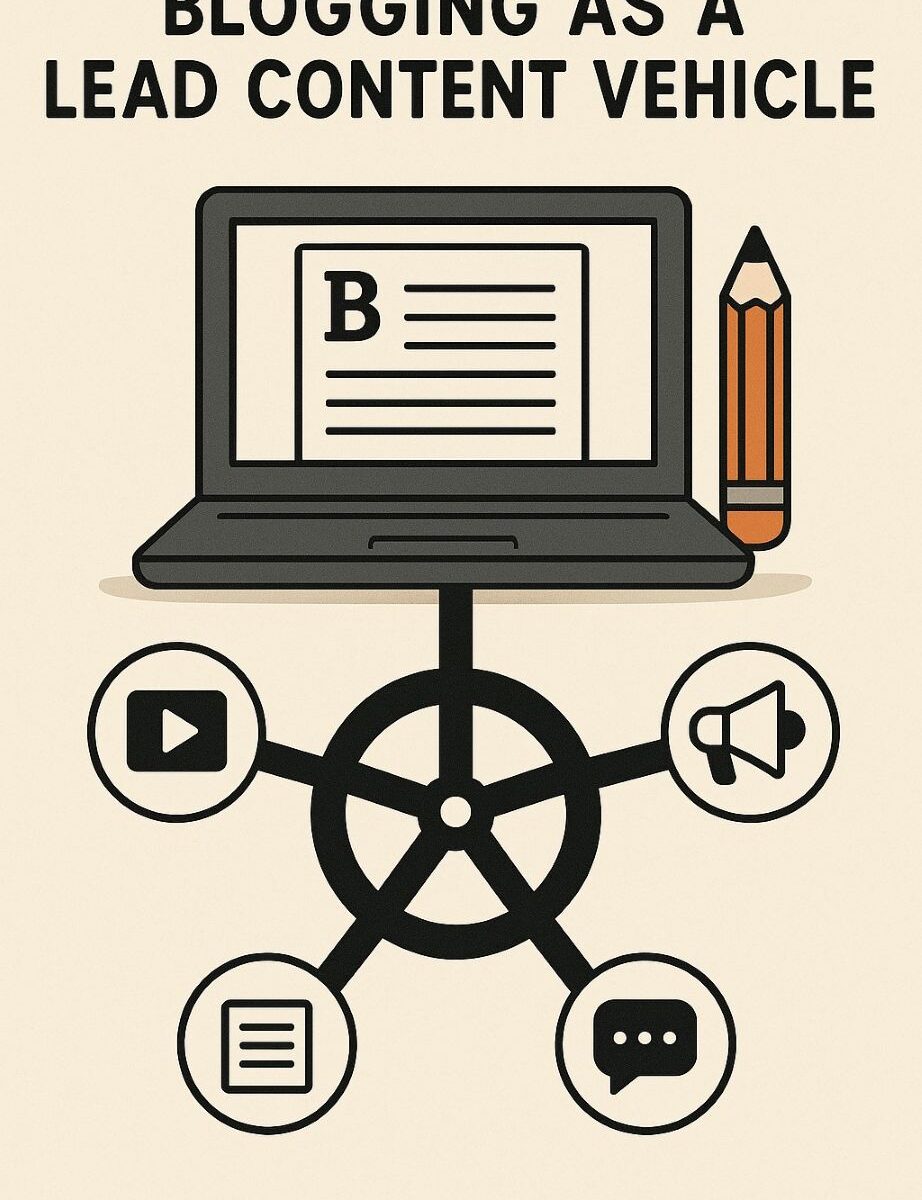I’ve just started a monthly newsletter, which is designed to attract my email subscribers back to my blog. This will remind people of what they might have missed on my blog if they don’t visit it regularly. As a biproduct of this, it will help with the Google Algorithm and SEO. I can also occasionally, but not too often, use it to sell my products and services. It’s a win: win. In the newsletter, I include snippets of the blogs I’ve written the previous month, with a link to that blog post. I also include any insights and what I’m reading/consuming.
Continue reading “How to Build a Monthly Newsletter That Grows Your Blog”Portfolio Career: 3 Ways to Multi-Brand Yourself on LinkedIn
I am building up a writing/ coaching practise around financial freedom, at the same time as growing and maintaining my Sales Agent business. The issue was how to multi-brand myself on my LinkedIn profile?
I can have both brands on my LinkedIn profile, but the key is to structure it in a way that makes sense and doesn’t confuse my audience. Here are the options on how to multi-brand yourself effectively.
Continue reading “Portfolio Career: 3 Ways to Multi-Brand Yourself on LinkedIn”
Two Offers, One Pitch: Sell More with a Unified Sales Strategy
I am a commission only self-employed sales agent and I represent two different companies who sell different but complementary products and services. Here I show you how I put together a unified sales strategy.
Continue reading “Two Offers, One Pitch: Sell More with a Unified Sales Strategy”
Be Your Own Niche
The riches are in the niches. This is the advice you hear from the experts, when you are starting a business or content creation project. Its sound advice, but it’s easier said than done. It also doesn’t rhyme where I come from!
My advice for what it’s worth would be to be your own niche.
Agile Selling by Jill Konrath – my takeaways
About midway through my sales career, I changed jobs. This meant a change of company and products sold. Although I was still selling to the same industry (Food and Beverage), it also meant a change from hybrid account management/ business development to solely business development. Before I started the new role, I read (and re-read) Agile Selling by Jill Konrath. The tagline of the book was ‘get up to speed quickly.’ This is exactly what I needed. Here are my notes on the book and my key takeaways.
Continue reading “Agile Selling by Jill Konrath – my takeaways”
What’s My Lead Content Vehicle
Having one lead content vehicle is important, when creating content. This is because it’s much easier to get traction if you concentrate your creativity on one outlet. You can then repurpose this into other formats later. My lead content vehicle is blogging.
Repurposing Content
How I repurpose content
My lead content type is writing. It is what is natural for me, I’ve always written and it was what I excelled at, at school. Repurposing content allows me to get me writing out to more platforms and drive traffic back to my blog.
Your initial therapy consultation session
If you are just starting out in your Hypnotherapy or NLP practise and are not sure about how to structure your first initial therapy consultation session, I will walk you through the process in this post.

Before you start to market your hypnotherpy business, decide whether your first consultation will be a Free Session or whether you will Charge. It is a common practice for the first session to be a free consultation, although not always. I will leave this up to your discretion there are pros and cons to charging and giving for free.
Rapport
The first stage in your initial consultation will always be to establish rapport, without exception. This is where you discuss pleasantries, if the client is willing. If the client wishes to dive straight into the issue, then fine. You can still establish rapport, using your listening skills, matching and mirroring.
When allowing the client to speak, always remember the Five Minute Golden Rule. This is where you allow them to vent off their feelings without interruption. You do not judge, but you can maybe ask for clarification.
Subjective Interpretation
When allowing the client to describe their unwanted behaviours or results beware of their subjective interpretation. For instance, they may complain that they were passed over for promotion at work because they are clearly not well thought of. This is a subjective interpretation of an event. Do not buy into this. Stay objective.
Is it real? People exaggerate and lie, so again do not buy into it.
Commonly, what a client presents to you is not what needs addressing. The client’s subconscious mind knows what needs addressing. However, the client will consciously dress this up as something else. It is not for you to try to find out what this issue is. Acknowledge it but move on. Your therapy will allow the client to go inside and get their subconscious to heal itself.
Ask them if the have they seen other therapists about this issue. If you’re the fifth person they have seen, then there is obviously something else that needs addressing.
Above all, don’t buy into their subjective interpretation.
What about your subjective Interpretation? You should obviously leave your own baggage at the door. You mind map will be different from the clients. Stay objective and neutral.
Resources
Once the client has vented their feelings, you can then begin to question them further. Your aim here is to access resources you can later use in their therapy. Find them and feed them back into the therapy. Ask about their work, hobbies, and interests and note these. Establish further rapport by establishing common ground. Perhaps you or someone you know closely has the same interests. If you can’t find any, then lie. Remember the purpose here is to help the client get better, so a little white lie is fine.
Harvest Positive Emotions
Allow time to shift their headspace from negative to positive. You can do this be exploring what they say and steering it to something positive. Harvest as many of these positive resources as possible. Ask what was good about the situation? Jump on anything positive they say and expand on it.
Subjective Unit of Discomfort
Check their SUD (Subjective Unit of Discomfort
Here you can ask them on a scale of 0-10 (10 being bad), what is the emotional or physical pain.
Then ask them what level of discomfort would they be happy to live with. For instance, they may say they’re currently at a level 9 but would be happy to live with a level 3. You will use this in later sessions to check on their progress.
Secondary Gains
Always beware of secondary gains when involved in therapy. These can be an obstacle, for example, a smoker actually wants to stay slim or someone with a bad back doesn’t want to mow the lawn. Now these could be at a subconscious level. During your therapy, you may need to take account of these. You could put in some suggestions to the effect that you will easily maintain your slim physique when you are a non-smoker.
Use Clean Language
Use clean language, I don’t mean don’t swear, but use language which is unambiguous and doesn’t have negative undertones.
Talk about unwanted behaviours, thoughts and effects, not problems. Your client may present themselves with a problem, but from then on, you will refer to it as an unwanted effect. You can also go one better than this by then flipping it to its positive. So for example, a client may present to you asking to stop her fingernail biting habit. You could start by asking her why she wants to stop. She may say she is getting married later that year and wants long fingernails, to decorate. That is what you will then focus on – the outcome itself.
There are no problems only unwanted behaviours, thoughts or feelings.
Cut out the word try. Let’s say you ask me to go to your party. Perhaps I might say I’ll try to get there. You know I’ll likely not arrive. So don’t ask you client to try to do something. Give them suggestions, directives and orders if you have to.
This also works for you. Don’t say you are trying to do something. Instead, say “My aim is …”, or “My goal is…”, or “I am in the process of…”.
The proper use of language has a profound effect on how you perceive the world. As a therapist, you are in a privileged position of being able to affect people’s lives for the better, just by how you speak.
Questions
I keep six honest serving men they taught me all I knew, there names are What and Why and When and How and Where and Who. Rudyard Kipling.
My very first Sales Manager taught me this and he suggested to me that the most critical skill I could learn in Selling and Life was Questioning and Listening.
Practice the open questions using the honest serving men from above. They will affect the clients mind by making them go inside to search for the answer. This in itself is hypnotic in nature. You can then begin to access their subconscious better than asking closed and leading questions.
To illustrate this, the question “Is your fear of spiders serious?” is such a lousy question on so many levels. A better question is “How do you feel when I mention the word spider?” continue to ask open questions to get a full understanding. “When does this occur exactly”. “Who are you with?”.
We are not necessarily asking these questions because of the answers. We are asking these to access eye cues and the client’s suggestibility. Ask as many questions as possible.
Sell the benefits of them changing
In a way, therapy is very similar to the sales process. You ask questions, you listen, then you sell the benefits of them changing. The client already wants to change, that’s why they came to you in the first instance. Part of you your job as the therapist is to reinforce the benefits that they will get from changing. This is done in the therapy sessions as well as the consultation. You therefore provide a benefit, then the therapy, then another benefit.
You can uncover some of the benefits that are unique to them by finding out what outcome they want. A great question to ask is, if I could click my fingers and you were instantly better or cured, then how would you know? What would you feel, see and hear?
Listen attentively to the answers. Feed them back into the therapy. You may uncover some powerful emotional benefits here. For instance, they may tell you they want to lose weight to be in great shape for their wedding.
If you uncover these benefits properly, signing them up for the paid therapy should therefore be a formality.
If you would like a free copy of my first consultation template contact me and let me know.
How to market your coaching or therapy business
Marketing of your coaching or therapy business needs to be consistent. It is not something you do once or twice. It should be a regular part of your working day. In this short post I give you an overview on how to market your coaching or therapy businss at the very start. See my series on selling.

Off-line marketing
Be Remarkable
This means people will remark on you. Have you thought of how much you will charge? Plan to charge as high as you can. You will then attract the type of client who is serious about personal change and development.
A few don’ts
Don’t do leaflet drops or newspaper ads or shop windows, unless you want to attract the type of client who responds to those types of marketing.
Where to market yourself
Be where the people are going to be looking for your services. So who are your ideal clients going to be and where do they congregate? Make it your mission to get into these places. Remember, it’s always easier to ask for forgiveness than it is to ask for permission.
Freebees
Giving away freebees can be a good way to gain some client testimonials in the very beginning. However, do have a plan to start charging as soon as you can. From then on, only give free sessions as a volunteer, rather than as a marketing exercise.
Finally, whatever offline marketing you choose do it professionally and stay consistent.
On line marketing
Websites
Choose a URL, which is easy to remember and type.
Website terminology is similar to the old printing press terms. For instance, you will have a first fold. This is the top of your home page, which is visible in a browser without needed to scroll down. This acts like the top of a page of a broadsheet newspaper folded over.
You only get seconds to make an impact to someone visiting your site. So cut to the chase and put in a Call to Action – like “Click here to start today”. Start to collect a list of email addresses, which you can send marketing emails. You could give away something free in exchange for a visitor to give you their details.
Always have an about me page. It is essential that people visiting your site know that you are a real caring person. Put a good quality picture of you here.
Also on your About Me page you can list the benefits that clients will get if they work with you. Less is more here. Maybe you will want to specialise in one or two areas.
Don’t bother putting all your qualifications here, just one or two relevant ones. Remember people are only interested in what they will get.
Use emotional words in your copy. This makes you a real person and people like to deal with other people.
Pay per click – Google AdWords
Google AdWords can be a great way to generate traffic to your website in the beginning. Here you pay google every time someone clicks a link in an advert, to go to your site. You can determine where these adverts go and, for instance, they can be on the search page on the right-hand side or on other people’s sites that have opted for Google AdSense.
However, there are a few words of warning. Your website needs to have a professional appearance and optimised around a good Call to Action, otherwise people will be enticed to your site and once they get there, they will just bounce right off.
Secondly when you need to be very careful to budget for what price you are willing to pay and how many clicks per day, otherwise it can get very expensive.
Facebook ads
In a similar way to google AdWords, you can pay for Facebook ads that will show up in people’s newsfeeds. Facebook ads are better than google AdWords, in a sense, because you can really target your desired market. You can target by geography, interests, gender, age etc. the list is almost endless.
Offline Marketing
Networking Events
One the first things new business entrepreneurs do is get their business cards printed. Don’t let this be the first job you do as people rarely follow up on business card swaps. The way to stand out from the crowd, especially at networking events is to swap business cards, but you do the follow-up. Assume the other person won’t follow up.
Cold Calling
Good old fashioned selling – getting on the phone and making things happen is the most effective way to get your business off the ground. It may be useful in the beginning to target companies for your coaching and therapy business. There are advantages to this. Firstly, you can charge more, but also once you have a corporate client you can use them as a great testimonial.
5 STeps to Set Up a Sustainable Online Profitable Business
5 STeps to Set Up a Sustainable Online Profitable Business
In this post, I go through Pat Flynn’s points on how to set up a sustainable online profitable business.
There are firstly two things that all businesses must fulfil in order to find prospective customers and to convert them into buying customers. Continue reading “5 STeps to Set Up a Sustainable Online Profitable Business”







